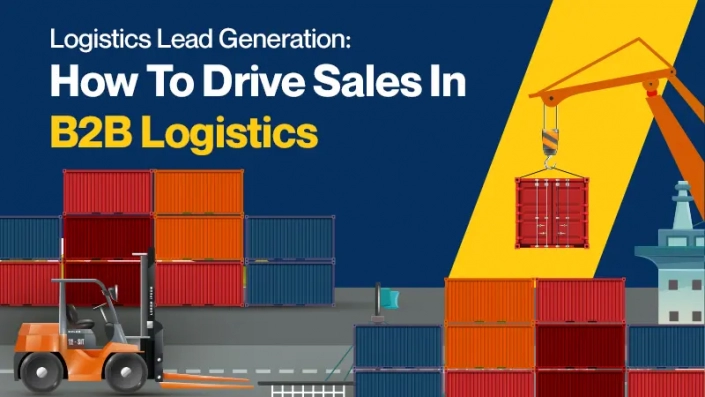
If Commerce Were A League Of Heroes, Logistics Would Be Its Superman.
When we think of logistics, e-commerce is often the first thing that comes to mind. Amazon is a prime example of a company that excels in this area. However, where do B2B logistics providers fit in? Can B2B companies replicate Amazon’s success?
Logistics is a crucial industry that serves as the backbone of the economy. It drives countries to trade and compete, creating employment opportunities across various sectors, not just commercial ones. It’s an awe-inspiring concept to ponder.
Types of Logistics
Third-party Logistics (3PL)
Fourth-party Logistics (4PL)
Warehouse Providers
In-house Logistics
Courier Shipping
Reverse Logistics
Logistics in B2B
Connectivity is a highly critical aspect of B2B, and in order to achieve this, there has to be better communication and collaboration between companies, their suppliers, and their customers. Electronic Marketplaces (EM) have become the system to make this happen. In the context of logistics, they are known as Electronic Logistics Marketplaces (ELM).
Logistics B2B Lead Generation
Logistics companies that create sales leads in-house miss out on chances that may drive their company ahead.
As logistics sales professionals, you know how challenging it may be to contact decision-makers with a logistics B2B lead generation marketing strategy.
Perhaps they are just too busy for a phone call, or perhaps you are not targeting the right prospects. So, if you want to reduce the sales cycle, whatever the case may be, you must learn who your ideal prospects are to replenish your pipeline with fresh logistic connections for your transportation solution.
Achieving Higher Logistic Profits With Effective Management, Marketing, and Sales
7 Best Customer-Centric Practices
Developing goodwill strategies may depend on the organizations that are designed for them. However, I have found that companies that are in the business of supply chain (and logistics) have these customer-centric characteristics in common:
- Understanding the buyer’s purpose.
- Ease of doing business.
- Take ownership of problems and improve outcomes.
- Use Cost-To-Serve (CTS) data to create customer value.
- Listen to customer feedback.
- Have an efficient cross-functional collaboration.
- Map and measure performance.
Market Segmentation
There is no doubt that logistic enterprises have accelerated economic growth and productivity globally. Not only are the world’s countries becoming economically competitive, but the transportation and logistics industry as well.
Market segmentation is a way to help them optimize their marketing programs and create a personalized customer experience. This method goes well with the Ideal Customer Profile (ICP) which helps narrow down your marketing-qualified leads (MQLs) and sales-qualified leads (SQLs). As an added bonus, segmenting your market will help your supply chain partners allocate their resources more efficiently.
How To Market Logistics
By now you may have realized that anyone in this business knows that to be successful in your industry you must increase productivity, leverage your assets, and be highly efficient in all aspects of your logistics operations. And it would be best if you did this while making sure to lower transportation, equipment, and warehousing costs as much as you possibly can. You’ll notice that the primary focus in this sector has always been on material costs and gains.
However, technological breakthroughs have created opportunities to enhance business models while keeping expenses down. When the material costs have gone down thanks to these technologies, the ROI for successful marketing and sales tactics has increased. It is now easier to get qualifying leads with the right channels!
There are so many revenue-generating methods that would help logistic marketing today and in the years moving forward! But digital still remains a challenge for most companies and they are reluctant to explore beyond traditional approaches such as transactional marketing.
Be sure to explore these highly recommended marketing strategies by reading the full guide.



